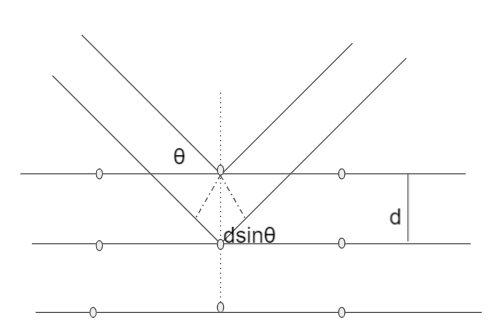Bragg's Law Calculator
Make use of our free Bragg's Law Calculator to find the unknown parameters like order, incidence angle, wavelength, interplanar distance within a short span of time. Enter the known values in the input fields and click on the calculate button which is in blue colour to get the output easily.
Steps to Calculate Bragg's Law Parameters
Get the step by step procedure to calculate the Bragg's law parameters in the following sections.
- Make a note of the given details from the question.
- Bragg's law equation is n * ╬╗ = 2 * d * sin(╬╕).
- Substitute the given details in the equation and perform the required operations to get the result.
Bragg's Law Formula
Bragg's law is the fundamental tool for investigating the crystal structure. It is a special case of Laue diffraction that finds the angle of coherent and incoherent scattering from a crystal.
Bragg's law states that when the x-ray incident onto a crystal surface, its incidence angle reflect with the same angle of scattering. When the path difference is equal to the order of the wavelength then consecutive interference will occur.
Bragg's Equation
It is the condition for the angle of the incident wave for which the maximum diffraction pattern occurs and the formula is n╬╗ = 2d sin╬╕
Bragg's law equation explains why faces of crystals reflect X-ray beams at particular angles of incidence.
Where,
n is the positive interger, order
╬╗ is the wavelength of the X-ray
d is the interplanar distance i.e the distance between consecutive layers of atoms
╬╕ is the angle of incident X-ray
Example
Question: The wavelength of X-rays is 0.051 nm which is diffracted by a plane of salt with 0.28 nm as the lattice constant. Determine the glancing angle for the second-order diffraction. Let us take the value of the salt plane to be 130 and the salt is rock salt.
Solution:
Given that
Wavelength of X-arys = 0.051 nm
Lattice constant = 0.28 nm
Plane = 130
Order of diffraction = 2
Glancing angle = ?
Using Bragg's equation 2d sin Ө = nλ
Rock salt has FCC
So, d = [(0.28 x 10-9)/(√(1² + 1² + 0²)]
= (0.28 x 10-9)/(√(2) m
Substitute the values in the equation
2 * [(0.28 x 10-9)/(√(2)] sinӨ = 2 * 0.051
Ө = 14.8°
Therefore, the glancing angle is 14.8┬░.
At Physicscalc.Com, you will also get different concepts calculators like thermodynamics, electromagnetism, optics, waves, etc assist you to make all your calculations easy & quick.
FAQ's on Bragg's Law Calculator
1. What are the applications of Bragg's Law?
The applications of Bragg's law is in case of X-ray fluorescence wavelengths and spectroscopy or wavelength dispersive spectrometry, crystals of known d-spacings used as analyzing crystals in the spectrometer.
2. In Bragg's Law what is the order of diffraction?
The order of diffraction is a positive integer and it is represented as n in the equation.
3. Give the difference between diffraction and interference?
Interference is a property originated by waves from 2 different coherent sources, whereas wavelets of secondary is originated from the same wave but occur from the different parts to produce a phenomenon called diffraction.
4. How to solve interplanar distance in bragg's law equation?
Bragg's law equation to calculate the distance between consecutive layers of atoms is d = (n╬╗)/(2sin(╬╕). Substitute the values in this equation and solve.

